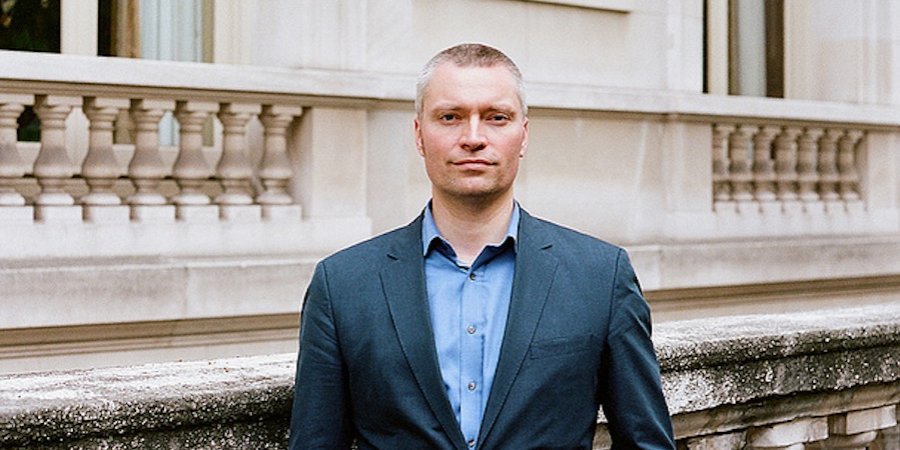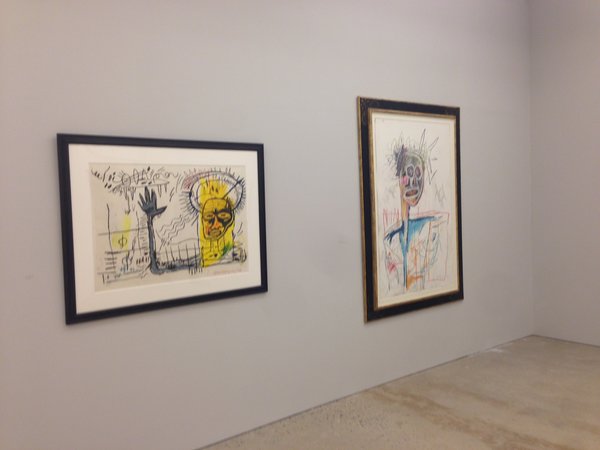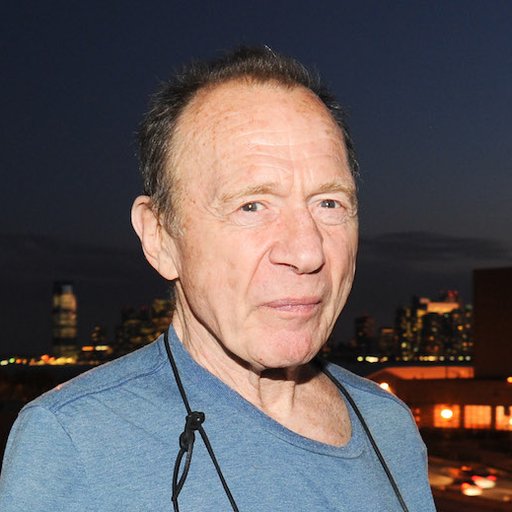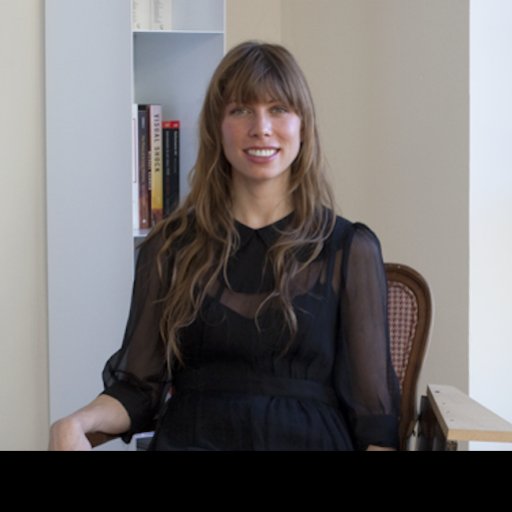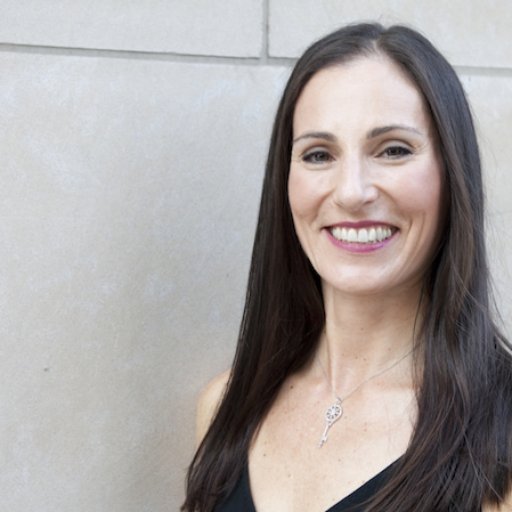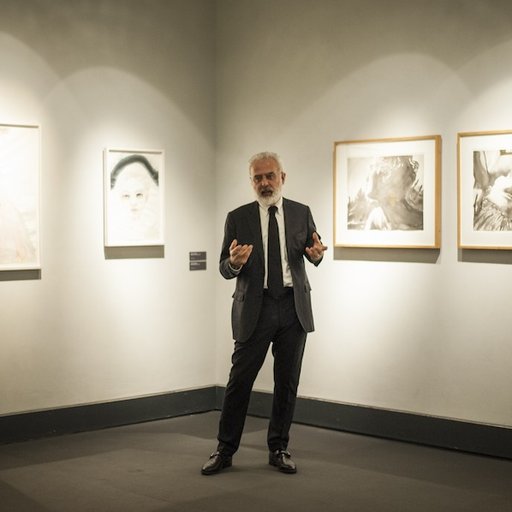As they say, history marches on. But its cousin, art history, doesn't always march in a straight line. Recently, curators are showing an interest in combining works from across decades—or even centuries—in juxtapositions that challenge our linear understanding of art's progression over time. (For one example, see
our recent interview with curator Bice Curiger
, who is putting the work of contemporary artists in conversation with
Vincent van Gogh
at the
Van Gogh Foundation
's new home in Arles, France.)
For
Dieter Buchhart
, such comparisons are a matter of intuition. The Austrian curator's latest project is the three-artist show
Poetics of the Gesture
, on view at New York's
Nahmad Contemporary
through June 14th. Buchhart combines the work of three artists one wouldn't naturally expect to find hanging side-by-side. First:
Egon Schiele
, the 19th-century Austrian painter of then-shocking—pornographic, according to some—gnarled, expressionist nudes, including provocative nymphs as well as equally scandalous self-portraits. Next comes
Cy Twombly
, the American artist active in the late 1950s (he died in 2011) celebrated for his quasi-calligraphic paintings and drawings on muted ecru canvases. Finally, there's the unlikely link between Schiele and Twombly:
Jean-Michel Basquiat
, the Warhol-acquainted
enfant terrible
of
Neo-Expressionism
in 1980s New York, who is, in many ways, the star of the show.
As heady as that conflagration of periods, styles, and techniques seems at first—and especially when you consider Buchhart's bold contention that Basquiat was primarily a conceptual artist, above all else—the three are unified, in the curator's estimation, by the poetics of their gestural use of line.
This show begins with Jean-Michel Basquiat. You’re something of a specialist on his work—
and of course you edited a major monograph on his work that was published by Hatje Cantz in 2010
. I’m curious what initially drew you to Basquiat.
I did my PhD on Edvard Munch, and when you compare the 1880s of Munch and the 1980s of Basquiat, the one decade for which he was working, I found the same intensity of the moment in both artists’ work. There is this incredible parallel energy that drew me, through my Munch research, to Basquiat.
How did you make the connection between Basquiat and Egon Schiele?
First of all since the ’90s, having grown up in Vienna, I’d been thinking about and working a lot on Schiele—that’s kind of what every art historian training in Vienna does: Schiele, Klimt, and Kokoschka. Both Schiele and Basquiat developed their own individual styles, were only working for more or less a decade, died at the same age, and had these great father figures—in the case of Schiele, Gustav Klimt, and in the case of Basquiat, Andy Warhol —even if, of course, the relationships were different.
Looking at Schiele, he never explored abstraction, which was the major avant-garde at that time. What he did is refine the figure—inspired by puppet theater, marionettes, popular theater, dance—and found a break with art history at that time. On the other hand, dealing with the issue of influence, you have Basquiat, who was taking the inclination of working in the 1980s—borrowing from everything, combining references, as in collage, or, you could say, like sampling in hip hop—and creating an artwork based on different styles, different kinds of knowledge, and different kinds of art and culture. It was the idea of a parallel development—the idea of the line—in both artists’ work, which, for each artist, is so incredible, so unique and inimitable, that connected them for me.
I wonder, because you mentioned the influence of dance and other art forms for both Schiele and Basquiat, how you decided to take an approach that centered on a formal analysis? It’s interesting that the third artist in the exhibition, and the bridge between Schiele and Basquiat, is Twombly, who was working in a very different moment—the 1960s, a decade with its own set of concerns about form and influence.
Twombly was taking up Schiele a few generations before Basquiat. With Schiele and Basquiat, the greatest unifying element is, of course, that both are making drawings; even if they made paintings, both always used techniques from drawing. So the question was how to connect these two artists in the sense of generations on the one hand, and, on the other, what artist had been especially influential for Basquiat and how he developed his inimitable line. And that’s Twombly.
Twombly was very influential for Basquiat early on, in the transition from his poetic conceptual graffiti to his early collage works, drawings, and paintings. You see that in the way Basquiat works, with a type of line derived from handwriting, and the representation of handwriting. He also frequently used actual words, a very important part of his art. And Schiele, on the other hand, though he has so many similarities to Basquiat, seems less obvious at first in this trio. But the bridge between Twombly and Schiele is Basquiat—it’s not about making the comparison between Schiele and Twombly, but really, Basquiat is in the middle.
So you’re taking less of a linear historical perspective, and something a little bit more fluid. We know people have mentioned seeing Twombly books in Basquiat’s studio, but I wonder if Twombly ever looked at Schiele?
He likely did, because he was a very well educated artist, so he must have known Schiele’s work. As for Basquiat, I know from his friends that he was definitely familiar with Schiele. Don’t forget that the great breakthrough in popularity for Schiele was in the 1980s, long after his death—it finally happened in the U.S. at the exact time that Basquiat was working. For example, Sherrie Levine did her “appropriation pieces” about different artists, including Schiele, in ’82. And there were several shows going on that Basquiat could have seen; he was definitely thinking about it.
What do you think is the value of making these kinds of transhistorical comparisons, with this fluid historical model, for art today?
I think it’s an important method for revisiting the work of one artist to see it in combination with the work of others. In the last year, there have actually been several shows making these kinds of comparisons between artists of different generations. This show puts a lot of its emphasis on the importance of the drawing, which is the key to understanding the art of Basquiat. It’s extremely helpful and supportive seeing his work together with two other artists, who were also so engaged with drawing. Though they were working at different times, all three of these artists were way ahead of their times in thinking about what drawing means. Each made his own major contribution.
Basquiat was a superstar figure in a moment in the 1980s when the art market was exploding, when it laid the foundations for the market as it is today. What do you think accounts for his wild success?
First of all, his very early conceptual graffiti made a big impression on quite a few people in the art scene. It was clear from the beginning that the foundation of Basquiat’s art was conceptual, and, actually, distinct from Neo-Expressionism. His work is an amazing collection of knowledge; I like to compare it to a “knowledge space,” which is a term from philosopher Pierre Lévy whose works about the human collective knowledge and shared distributed knowledge systems. It’s a way of thinking about a three-dimensional interface that you can interact with in space and receive knowledge collected from different times, a sort of rounding space. Which is what Basquiat created, in a way, on his canvases and in his drawings but before the internet.
Basquiat was, according to stories told by his friends, an extremely charismatic person, and of course it was also his charisma that helped to make him so famous. But it’s important that when he was doing his early poetic graffiti under the name SAMO©, people didn’t know it was him. They were just judging the work, not knowing who had made it. Not to mention that he was doing graffiti in collaboration with Al Diaz—they were a duo. They split in 1979, and Basquiat went his own way, but continued with a lot of ideas developing out of his conceptual graffiti.
So it was his art as well as his persona, but the work is the main reason that he received so much respect from the art world, where it wasn’t normal for an African American artist to become such a superstar, alongside the likes of Warhol and Keith Haring . But he did it, and he did it with works mainly concerned with African American figures—athletes, jazz musicians, et cetera.
I think it’s interesting to compare Basquiat’s influences from graffiti with Twombly’s use of script, which comes out of something more like automatic writing.
Absolutely right. And it’s a controversial connection, as a linking element, but Schiele’s works were actually called toilet graffiti; they were considered pornographic. Basquiat, of course, started with graffiti, even if he was never accepted by the graffiti community. Thinking about Twombly, he has been talked about so often as an artist creating scribbles, reminiscent of graffiti, but it’s interesting that even Twombly didn’t call himself a graffiti artist or anything like that—it was all about poesy, writing that is not linear in the way that graffiti is as used by Basquiat.
And it also comes back to the use of the body and motion, because graffiti is, of course, something that happens in the landscape, in motion. With Basquiat you often actually see footprints on the paper. The way he treats the materials themselves is very body-oriented, and there’s a lot of motion in the work.
You could even compare it with a dance. It’s his physicality that he transfers, especially in his drawings, onto paper.
Do you see artists now who are using drawing in the same way, or who are clearly influenced by this lineage?
Basquiat was so influential on many graffiti artists. I recently had the pleasure to visit the studio of an artist who started as a graffiti artist and is now doing paintings in the gallery and museum world—José Parlá, a New York-based artist from Cuba. I had a great opportunity to see him working, which, in a way, was a dance, coming out of the body. That’s also the way that Basquiat worked. That physicality makes the line personal in the treatment of the line, which also happens in Schiele’s drawings, and of course also with Twombly.
Parlá absolutely shows a huge interest in all three of these artists, actually, and in this individual line; you really see how the body is the productive origin of his mark making. I also see a continuation from artists like Basquiat in other artists; for example Rashid Johnson , in terms of physicality. Johnson uses black soap in his works, which gives his paintings a fantastic, very matte surface. And those drawings are very physical; he does something very similar to Basquiat, even though he has a very different, very individual agenda.
You’ve mentioned the conceptual roots of Basquiat’s work, which probably aren’t obvious, at first, to most people, who associate him primarily with Neo-Expressionism. His style is often called “primitivist.”
Basquiat did so many works focusing on words: canvases with one word on them, drawings of one sentence on a huge sheet of paper, combined with heads and full figures. At the beginning, the repetition of single letters was important to him; the repetition of "A," of "E," of "I." All of this is very different from Neo-Expressionism’s focus on painterly ideas. If you look at artists across Europe who are associated with Neo-Expressionism, like Georg Baselitz , and of course the American Neo-Expressionists, too, like David Salle and Julian Schnabel , there is a real difference there. For Basquiat his work was all based on the idea of knowledge, and bringing ideas together. He wrote lists in a lot of his works, for example; he integrated many such motifs based on ideas. And he never visited lectures by painters; he would visit the lectures of conceptual artists like Joseph Kosuth, for example. His work is very knowledge-based.
And like Twombly, Basquiat’s work is beyond iconography; it’s not totally readable.
Yes, and by sampling and scratching—and this was, again the time of hip hop, so those terms fit very well—he created something new. Thinking about William S. Burroughs’s cut-out literary technique, which was very influential for young artists in the beginning of the ’80s, when he suddenly became this cult figure in the New York scene; this would have inspired the idea that you could create something new by randomly combining references. There is always a kind of inner logic in the work of Basquiat, so it’s never totally random, there is always a thought process behind his inner logic.
And I would go further, thinking about concrete poetry, and say that you can even read Basquiat’s works aloud, the way you can with Kurt Schwitters. You can try this for yourself; we have a great drawing in the exhibition, with "AAAAA," "EEEEE," and if you read it aloud you suddenly get the idea that it’s actually readable, literarily.
Do you think Basuqiat has been misinterpreted by art history?
Yes, I think so. Thinking of Neo-Expressionism, it’s easy for people to say, "That’s done with, it was before our time." Scholars would say, "Yeah, that’s just painting, and not concept." But you have to think of Basquiat as a much more conceptual artist—it’s more or less always the mind that’s the decisive element in his work.











